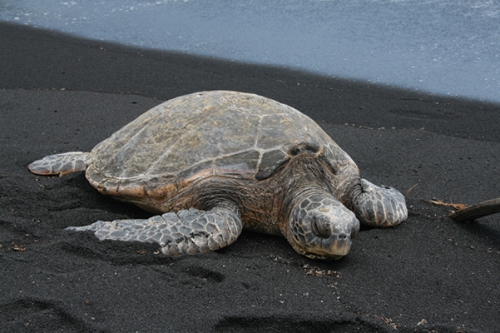Marine animals such as sea turtles and salmon routinely migrate back to their birthplaces from hundreds or even thousands of miles away. Kenneth Lohmann and his colleagues have a new theory about how they do it. Every oceanic region on Earth has a slightly different magnetic signature. At birth, an animal may read and store the unique magnetic field of its home. Later, the animal may remember that magnetic address as it travels back to the place it was born.
Lohmann’s theory will be difficult to test because only about one out of every four thousand sea turtles survives long enough to breed. Baby fish face similarly long odds.
But Lohmann thinks that his theory could lead to new ways to protect marine animals. “Ideally, it might be possible to steer turtles to protected areas where we would like them to nest,” he says. “It might also be possible to use magnetic imprinting to help re-establish salmon populations in rivers where the original population has been wiped out.”
In 2001 Lohmann and his team showed that baby turtles use magnetic information as a guide on their first trip across the Atlantic. And in 2004 they discovered that mature sea turtles use a more sophisticated magnetic map as they search for food.
But why go to so much trouble to return home? Scientists think this homing instinct evolved because animals that returned home produced more offspring than those that did not. “For animals that require highly specific environmental conditions to reproduce, assessing the suitability of an unfamiliar area can be difficult and risky,” Lohmann says. “In effect, these animals seem to have hit on a strategy that if a natal site was good enough for them, it will be good enough for their offspring.”
Johanna Yueh was a student who formerly contributed to Endeavors.
Kenneth Lohmann is a professor of biology in the College of Arts and Sciences.


